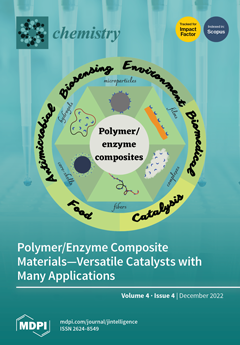Medicinal plants represent an inexhaustible source of traditional and effective remedies thanks to the various active ingredients they contain. Secondary metabolites present in plant extracts, such as essential oils (EO), have remarkable pharmacological properties, including antimicrobial effects. Here, the chemical composition and antimicrobial effects of four Moroccan medicinal plants,
Rosmarinus officinalis L. (
R. officinalis),
Mentha pulegium L. (
M. pulegium),
Salvia officinalis L. (
S. officinalis), and
Thymus zygis subsp.
gracilis (Boiss.) R. Morales (
T. zygis), traditionally used in Morocco to treat microbial infections, were addressed. EO were extracted using the hydrodistillation method, and analyzed by gas chromatography coupled with mass spectrometry (GC/MS). EO yields were of 3.64 ± 0.12, 3.53 ± 0.06, 2.48 ± 0.06, and 2.34 ± 0.08%, respectively, for
M. pulegium,
R. officinalis,
S. officinalis, and
T. zygis. The main bioactive components present in these EO were piperitenone (32.9%) and pulegone (32.8%) for
M. pulegium, 1,8-cineol (43.8%) and camphor (18.7%) for
R. officinalis, 1,8-cineole (16.8%) and
trans-thujone (15.9%) for
S. officinalis, and thymol (36.4%), carvacrol (24.1%) and cymene (23.5%) for
T. zygis. These EO showed, according to the results of their antimicrobial activities, good effectiveness against bacteria and fungi. Moreover, the
T. zygis EO showed the most potent activity against all bacteria studied, while that of
R. officinalis,
M. pulegium, and
S. officinalis showed moderate activity against the
Enterobacter cloacae of
Streptococcus agalactiae and
Escherichia coli. The antifungal activity tests revealed a strong antifungal activity for the
T. zygis EO and a moderate activity for the
S. officinalis EO. On the other hand, the EO of
R. officinalis, and
M. pulegium were found to be inactive at the doses used against the selected strains. In conclusion, our results show that the medicinal plants studied contain biologically active molecules with antimicrobial effects. They can replace synthesized molecules, especially in the formulation of additives, and for therapeutic, cosmetic, and food-processing purposes.
Full article





